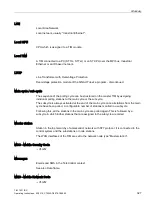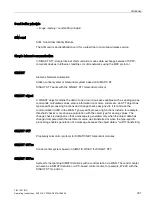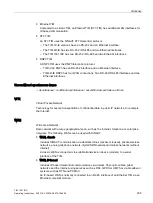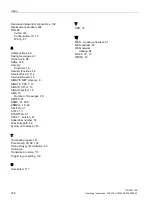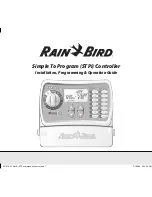
Glossary
TIM 1531 IRC
332
Operating Instructions, 02/2018, C79000-G8976-C468-02
SINAUT TD7 Library
Software for control of ST7 communication of telecontrol modules. The TD7 software in the
stations allows change-controlled transmission of process data between the individual CPUs
and the control center, for example ST7cc. Failure of connections, CPUs, or the control
center are displayed. Once a problem has been corrected or the CPUs or control center
have started up, data is updated automatically. Data frames can be given a time stamp, if
required.
The following variants of the TD7 software exist:
●
TD7onCPU
Program blocks in the CPU user program
The SINAUT TD7 library consists of program blocks for the CPU. They are available in
the following versions:
–
Library for STEP 7 V5
The blocks are executable on S7-300- and S7-400-CPUs (except CPU 400H). There
are only a few blocks intended specifically for the S7-300 or S7-400.
–
Libraries for STEP 7 Professional
There is a global library with two versions for STEP 7 projects in the TIA Portal:
- Blocks for S7-1500
- Blocks for S7-300 and S7-400
If the DNP3 protocol is used, TD7onCPU is not supported.
●
TD7onTIM
Configurable part of the firmware of the communication module
TD7onTIM can be used as an alternative to TD7onCPU for an Ethernet TIM. TD7onTIM
runs on the TIM. It is configured as follows:
- STEP 7 V5: In the SINAUT engineering software
- STEP 7 Professional: Via data points of the TIM
TD7onCPU and TD7onTIM cannot be used simultaneously in a station.
SMS
Short Message Service
The short message service in the GSM standard is used to transfer short text messages to
mobile phone users.
When the short messages are transferred, they are first transferred to the SMS center
(SMSC) using a store-and-forward technique. They are buffered there and then forwarded to
the recipient. The sender can query the status of the message in the SMS center or can
request acknowledgment of delivery.
SMSC
Short Message Service Center










